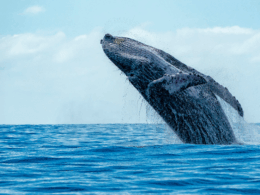Last year in my first podcast I talked about the Mayor of Santorini asking residents to stay at home to make space for hordes of cruise passengers coming ashore. Now mass tourism is back in the news in Europe with the start of a new summer season. So what does this mean for New Zealand? Can we fulfil out potential to be global leader on sustainable tourism?
References
- Emma Sandford (2025). Cruise industry booming with record number of passengers. Stuff. 22 May 2025. https://www.stuff.co.nz/travel/360696802/cruise-industry-booming-record-number-passengers
- Tom Rose (2025). New Zealand’s cruise industry falters as bookings drop 40%. The Hearld. 21 May 2025. https://www.nzherald.co.nz/travel/travel-news/new-zealands-cruise-industry-falters-as-bookings-drop-40-nationwide/BWAEE3YHJJCALCLRRRHZH5UTDA/
- Blayne Slabbert (2025). South Island cruise visits hit hard with Akarao hardest hit. The Press. 16 May 2025. https://www.thepress.co.nz/nz-news/360687319/south-island-cruise-visits-collapse-akaroa-hit-hard
- Sara Macefield (2025). The destinations trying to ban cruise ships and their ‘low-cost clientele’. The Telegraph. 20 February 2025. https://www.telegraph.co.uk/travel/cruises/the-destinations-fighting-to-keep-cruise-ships-away/
Transcript
Summer has returned to Europe and mass tourism protests are back in the news. Protests have been widely reported in the Canary Islands before the season has really even started and well before the peak of the season in July and August. It is of course the peak season that residents most dread. Thousands of residents have been marching in the streets in Tenerife, asking tourists to avoid their communities and demanding government action to rein in mass tourism.
The Canary Islands received 16 million tourists in 2023 and 18 million in 2024. Local residents are experiencing congestion and collapsing infrastructure due to too many visitors. Their message is “please don’t come, we can not take it anymore”. They are angry and frustrated, and have vowed to not stop until real change occurs. Some protests are confronting and disrupting political leaders when they make public appearances, zeroing in on the government’s single-minded focus on growth and a perceived neglect of the lives of local residents.
****
That will sound familiar to many New Zealanders. As I mentioned in my podcast on 18 February, the current New Zealand government is also single-minded in its focus on growth in visitor arrivals, with no imagination when it comes to sustainable tourism. As usual, the approach seems to be to maximise the extraction of economic value with little or no intention to invest to support the industry.
The tourism resource-base is largely made up of public goods and that is potentially problematic. It needs not only to be carefully managed. It also requires guardianship for the future. The national conservation estate that is so precious to New Zealanders and so iconic to visitors, public goods such as beaches, and penguins; conservation reserves and indigenous species. Not to mention the urban infrastructures and public utilities that are used by locals and visitors alike, and of course the most precious resource of all, host community goodwill towards tourism – which industry and government refer to as ‘social licence’. When it comes to sustainable tourism in New Zealand, this government has fallen short of minimum expectations.
****
In New Zealand the cruise tourism is an interesting case. Cruise tourism is never far from the media. The Cruise Lines International Association (CLIA) provides the media with a constant stream of cruise news. This week Emma Sandford writing for Stuff produced an article with the title ‘Cruise industry booming with record number of passengers’. The article pronounced that “More people than ever before took an ocean cruise last year, setting a record for the industry (with)… passenger numbers forecast to continue to grow”. Such news usually cites figures provided by the CLIA itself and are rarely reported critically. It seems to be assumed that these are numbers that are worthy only of celebration.
Of course the language is always glowing. According to a CLIA spokesperson, who is always available for interviews with cruise-friendly media and travel associations, cruising “continues to thrive”, the luxury cruise fleet continues to grow, and is more popular than ever, and the “diversity of experiences available to cruise guests is “phenomenal”. Lots to celebrate it seems. CLIA reporting usually also tries to talk up the economic impacts of cruise, and talk down governments that have tried to regulate the cruise industry. They claim that trying to set pricing in New Zealand cruise itineraries is “like playing Russian Roulette” when governments introduce regulations or impose fees.
The current New Zealand government has said that it is committed to listening to the cruise industry and remove regulations. Jacqui Lloyd from the New Zealand Cruise Association has said that the Government is “…showing promising signs that it is starting to take cruise more seriously”. She said that “There’s been a real shift in tone, especially from the Minister of Tourism and Hospitality, Louise Upston, who has shown strong leadership in pushing for better coordination across government and making a case for the value of cruise to New Zealand. “Ministers and officials are (apparently) now engaging directly with cruise lines and actively listening to their concerns. Apparently the “industry is thankful and is cautiously optimistic but we’re not out of the woods yet”. If the government does not remove regulations and without swift progress “we (New Zealand) risk being left behind.”
****
These are very typical industry discourses that are designed, of course, to serve vested interests. But what a difference a little bit of slightly more engaged reporting makes. Tom Rose writing last week in The New Zealand Herald painted a very different picture. His article carried the title ‘New Zealand’s cruise industry falters as bookings drop 40%’. He reported that “New Zealand is facing a steep drop in cruise ship bookings this upcoming summer, as the local industry raises the alarm over a pull-back from cruise lines”. The coming season will see a 40% decline in visits compared to the 2023/24 season.
Blayne Slabbert (2025) writing in The Press was also a bit more balanced in his article titled ‘South Island cruise visits hit hard with Akaroa hardest hit’. Rather than simply serving as an industry voice piece, Slabbert noted that sharp drop in the number of cruise ships expected to visit the South Island this coming summer as cruise lines scale back operations in New Zealand, presenting a graph that illustrated the sharp slide in cruise ship visits in several ports since Covid-19 and across the board since the post-Covid peak in 2023/24. Those local community residents who have been actively protesting against cruise lines in recent years will be delighted to see the sinking cruise ship visit numbers.

Jacqui Lloyd told the Herald that the decline is “deeply concerning”, stating that this New Zealand’s efforts to regulate cruise impacts has been seen as “unwelcoming”. Apparently we are losing our reputation as a world-class cruise destination. Biofouling management regulations introduced in 2018 have been singled out as a major issue. Cruise ships that have failed to meet New Zealand’s biofouling requirements have been turned away in recent years.
Apparently cruise lines are not opposed to strong environmental protections, but they prefer regulations to be removed wherever possible. That is cheaper and better for profits than having to actually meet regulatory standards it seems. Most New Zealanders, at least, would be pleased to know that regulation has resulted in higher levels of compliance. It says a lot that the cruise association choses to complain about regulation rather than commit to meeting regulatory standards, which you would think any operator would do if it was indeed not opposed to environmental protections.
Another routinely cited complaint is the proposed ban on mega cruise ships entering Piopiotahi Milford Sound in the Te Wahipounamu World Heritage Area. Again, Jacqui Lloyd has said the Minister of Tourism and Hospitality has been listening to industry concerns and has been “really proactive and supportive” in trying to improve outcomes for the industry. The language is always threatening: “New Zealand risks being “…left off future itineraries” without mention of any commitment to respond to growing concerns and opposition in local communities. What about trying to improve outcomes of local communities and local tourism?
****
So who should we believe? Is cruise booming or busting? My advice is to always question the source of information and opinion. It is critical to move beyond industry self-interest and seek independent insights. That is exactly what Blayne Slabbert did in his piece published last week in the Press. He made the effort to speak to Shane Vuletich before filing his article. Shane Vuletich is the Managing Director of economics consultancy Fresh Info and he is arguably the expert on tourism statistics in New Zealand– he is very adroit and … yes, he is independent. So what did Shane have to say to when asked about this. He said “Look, it doesn’t mean a great deal”. Why? Because “Cruise accounts for around 2% of the national visitor industry … so a drop would not be very significant at a [tourism] industry-wide level.
He went on to explain that “Cruise visitors have much less value to us than a traditional visitor, because the cruise line is trying to clip as much of the ticket as possible”. Cruise lines want to maximise onboard spending which is repatriated to offshore shareholders. And they are happy to do so by finding ways to minimise opportunities for onshore spending, and by gouging margins from onshore spending wherever possible. This actually echoes several years of cruise expenditure data analysis conducted by Statistics New Zealand (also independent), which was resisted by cruise advocates and, unfortunately, discontinued when Covid struck.
Vuletich also questioned whether cruise aligns with New Zealand’s long-term tourism goals, particularly around sustainability, infrastructure and value. The answer is it doesn’t. If cruise lines had any genuine concern about sustainability it would not be criticising governments, and it would not be lobbying hard for regulations to be removed. It might instead be seeking to work with local industry stakeholders to seek long term alignment with local and regional tourism goals. Jacqui Lloyd wants to remain cautiously optimistic that cruise activity can recover after 2027. Vuletich is less certain. His view is that “… New Zealand … (does not) have a strong position on cruise at the moment and he challenges the industry to prove its alignment with New Zealand tourism strategies and its value to New Zealand tourism.
****
The views presented by Shane Vuletich are actually much more closely aligned with what is happening overseas. In February this year Sara Macefield reported in The Guardian that the “backlash against cruise ships and their ‘low-cost clientele’ continues around the world, with many cities trying to ban them altogether.
Macefield reports that warning shots are being fired across the bows of the cruise industry as city authorities move to either ban cruise ships or hit cruise lines with punitive taxes. The mayor of the French Riviera city of Nice has castigated the cruise ships as “monsters of the seas” that “pollute and dump low-cost clientele’. Cruise ships carrying more than 900 passengers have been banned. The mayor deemed this absolutely necessary to stem overtourism and pollution.
This action triggered criticism from the Cruise Lines International Association in the form of a blunt rebuttal that accused the Mayor of “unfairly stigmatising the industry and its passengers”.
Those comments have not stopped other port destinations taking similar action to rein in cruise tourism. Some destinations have banned cruise ships based on tonnage due to concerns for the impacts of mega cruise ships. Venice allows only ships up to a limit of 25,000 tonnes to dock.
Amsterdam has limited cruise visits to 100 ships per year in 2026 before banning them completely. Barcelona has closed its cruise terminals and capped the number of cruise visits. In Bordeaux the mayor has responded to local complaints that cruise ships are an eyesore and cause unacceptable pollution while in port by calling for a total ban and a relocation of the cruise dock away from the city centre. In Palma and Ibiza ship visits have been limited and only one ship with over 5000 passengers is allowed to dock at a time.
Other destinations have moved to tax cruise ships on a per passenger basis. Iceland has implemented a daily tax which will be directed to infrastructure (to ease the cost burden currently imposed upon local residents) and sustainability measures. Santorini has imposed a tax on cruise passengers and a cap on the number of daily passengers coming ashore and Norway is looking to include cruise passenger fees in its general tourism tax.
Similar measures are either in place now or being put in place in Mykonos, Dubrovnik, and Zeebrugge. Valencia has announced it will ban mega cruise ships from next year. Marseilles city officials are responding to local protests and considering a petition to ban cruise ships that attracted more than 50,000 signatures, according to The Telegraph.
All of these destinations are trying to turn the tide against unsustainable tourism. In each case, the response from the cruise association has, as expected, been to complain about government regulation and offer predictions of detrimental impacts on future itineraries and the loss of income for local businesses. Sound familiar? The key point here is that when the CLIA criticises the government for regulating cruise, it should be noted that governments are not alone in taking steps to rein in these behemoths of unsustainable mass tourism.
****
So how is NZ actually doing on mass tourism and how is the government performing in terms of sustainable tourism policy settings? In my view the answer, as always, is the government could be doing much better. The current government is badly mistaken to be listening to cruise and reducing barriers which – as Shane Vuletich has said – will only result in greater misalignment with sustainable tourism.
The current government’s general approach to sustainable tourism and its policy settings are a resounding failure. Not only in direct terms, such as pushing relentless growth and ignoring local community concerns, while taking IVL income intended for much needed investment in infrastructure and conservation and cynically spending it on a poorly executed Australia visitor marketing campaign. But also indirectly in terms of fast-tracking legislation that undermines environmental protections which put at further risk the very natural areas that are the key resource for tourism.
This short-term approach is a shame because there is so much to celebrate in New Zealand tourism. What we do do well we do very well. The Department of Conservation remains our foremost government agency for tourism. Despite being constantly resource constrained, it seems, DOC delivers for biodiversity as well as visitor and heritage management.
Last week bookings opened for the first of next seasons Great Walks. The online booking system is fantastic. It uses a random online queuing system for people who want to book hut tickets. This prevents the booking platform from crashing under heavy demand and gives equal access to people who want to try to secure hut tickets on their preferred dates when demand is very high. The differential pricing system means that New Zealanders pay less than international visitors which makes sense. Until quite recently New Zealanders under the age of 18 were free which I thought was a great initiate to encourage young people to explore our greatest backcountry tracks. I would be pleased to see a return to great walk huts being free for New Zealanders under the age of 18.
Our local governments and regional tourism organisations are also doing good things to try to advance sustainable tourism. The Queenstown Lakes council’s recently completed Visitor Optimisation Project will provide world leading insights into tourism planning and decision making at the regional level. It is a key initiative of the region’s destination management plan “Travel to a Thriving Future’. All of New Zealand’s tourism regions have developed visionary and ambitious destination management plans. Regional Tourism New Zealand has been working hard to try to convince the government that implementing those plans does require resources but extracting from rather than investing in tourism is the mantra of this government.
And at the business level many Māori tourism operators are providing global leadership and inspiration on sustainable and regenerative tourism initiatives that are built upon and guided by principles such as kaitiakitanga and whanaungatanga. They are looking after environments through habitat restoration, carbon sequestration and protecting waterways. But also reviving cultural knowledge and identity. Regeneration is embedded into sustainable tourism, in ways that looks after people and environments while creating opportunities for social and cultural enrichment.
We need to advance sustainable tourism interests by regulating tourism that brings unacceptable social and environmental burdens and undermines New Zealand’s destination image. And by seeking to support and learn from inspiring forms of sustainable and regenerative tourism that enrich our environment and society.
****
What this tells me is that we need more discussion and debate about pathways to sustainable tourism. Key to this is the need for more clear and transparent insights into different forms of tourism, to combat industry greenwashing and to counter government lobbying. We need to raise awareness of independent insights such as those provided by Statistics New Zealand (prior to COVID) and people like Shane Vuletich at FreshInfo in the specific case of cruise tourism.
We also need more engaged media reporting. Journalism that investigates, questions and critiques what is being fed to the media by industry lobby groups is so important. Well done to Tom Rose at The Herald and Blayne Slabbert at The Press, who resisted the easy option of simply parroting insights that are constantly being circulated in the media by the cruise industry. Good journalism is important. It helps to raise awareness of the issues, and open pathways for New Zealand to meet in full measure its undoubted potential to be a world leader in sustainable tourism.








